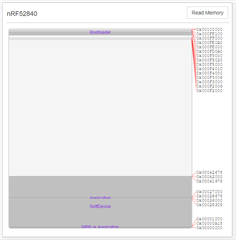1. I used the nRF5 SDK for Mesh v2.2.0 version to test the Mesh DFU feature and follow the DFU example tutorial.
http://infocenter.nordicsemi.com/index.jsp?topic=%2Fcom.nordic.infocenter.meshsdk.v2.2.0%2Fmd_doc_getting_started_getting_started.html ------->DFU quick start guide
2. The upgraded application is blinky_nrf52840_xxAA_s140_6.0.0.hex. After the upgrade is complete, I want to upgrade the second time, but it is not successful.
mesh-sdk$ nrfutil dfu genpkg --application bin/blinky/blinky_nrf52832_xxAA_s132_6.0.0.hex \
3. Then I went to check the source code of the DFU upgrade, so I think the application blinky_nrf52840_xxAA_s140_6.0.0.hex is not equipped with DFU function, just for flash led.
4. Finally, I tried to clear the device program and re-run the first upgrade, but the application selected the hex program compiled by the DFU routine. The file size is about 300K, but the upgrade is very slow, and finally there is no upgrade.
nrfutil dfu genpkg --application examples/NOA_dfu/build/dfu_nrf52840_xxAA_s140_6.0.0_Debug/dfu_nrf52840_xxAA_s140_6.0.0.hex --company-id 0x00000059 --application-id 1 --application-version 3 --key-file private_key.txt --sd-req 0x009D --mesh dfu_test.zip
I want to know if my understanding is accurate. And whether the application must be modified based on the DFU example, under the premise that the MESH DFU function is required



